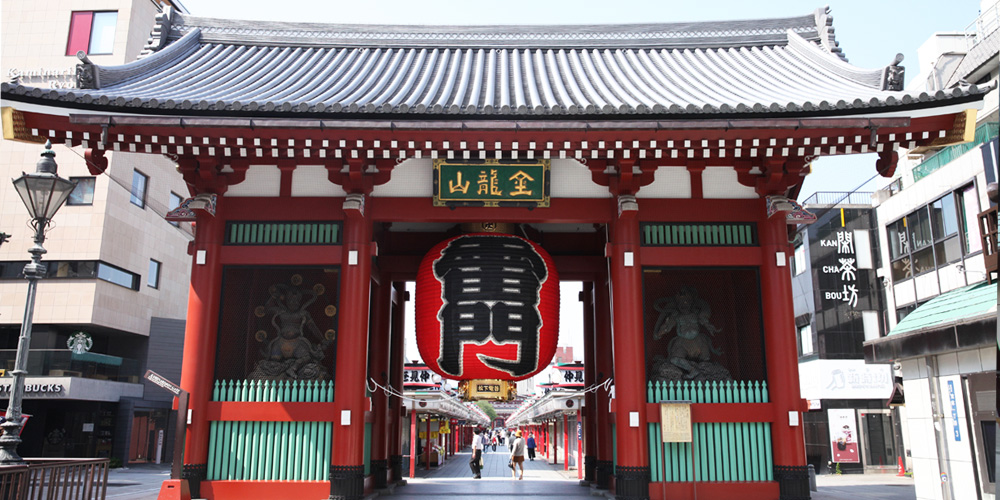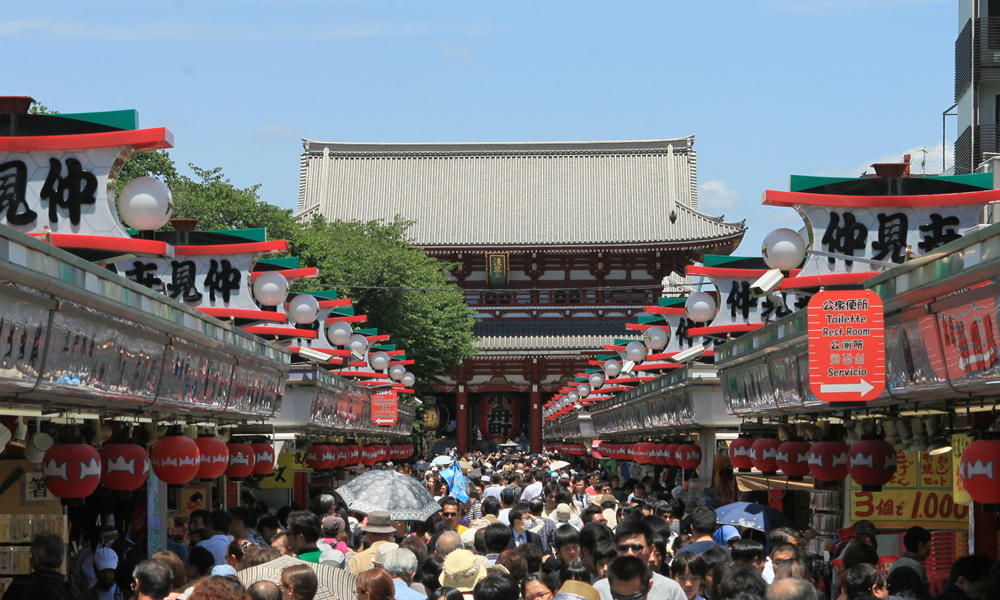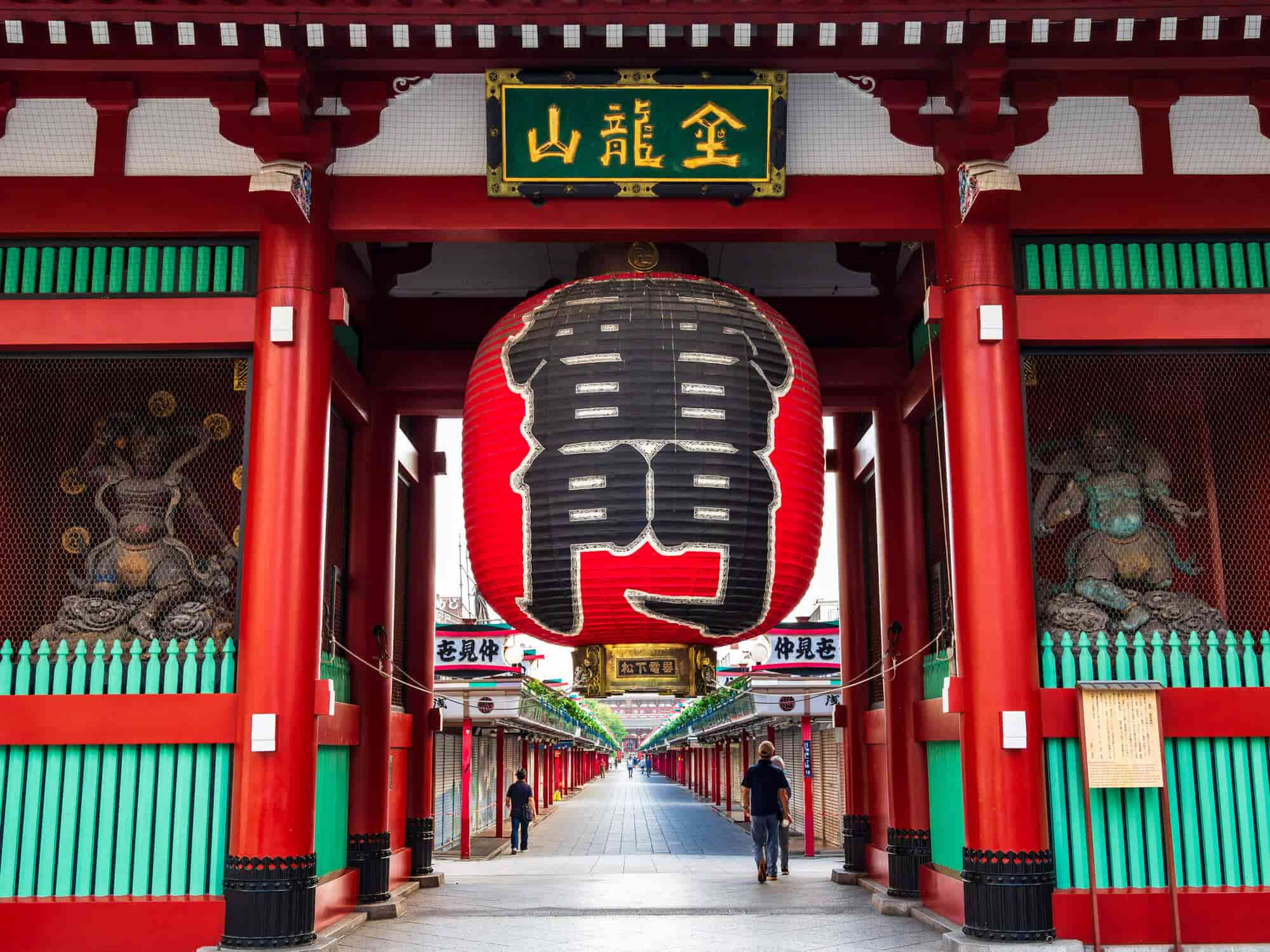


Senso-ji Temple
Tokyo's oldest temple, a vibrant hub of faith, history, and bustling energy.
While technically a Buddhist temple, Senso-ji in Asakusa, with its adjacent Shinto shrine, embodies the syncretic soul of Japanese faith. It is Tokyo's most famous and beloved temple.
History of the Shrine
Legend states that in the year 628 AD, two brothers, Hinokuma Hamanari and Hinokuma Takenari, were fishing in the nearby Sumida River. They netted a small, golden statue of Kannon, the Bodhisattva of mercy and compassion. Though they repeatedly put the statue back into the river, it miraculously kept returning to them. The village chief, Hajino Nakamoto, recognized the statue's sanctity and consecrated it by remodeling his own house into a small temple. This was the humble beginning of Senso-ji.
The temple grew in importance over the centuries, receiving patronage from powerful warlords and shoguns. Tokugawa Ieyasu designated Senso-ji as the tutelary temple of the Tokugawa clan and a spiritual protector of his new capital, Edo (Tokyo). The area of Asakusa flourished around the temple, becoming a major entertainment district. Though the temple was heavily destroyed in the air raids of World War II, it was rebuilt with donations from the Japanese people and stands today as a powerful symbol of rebirth and the enduring faith of the common people.
The Enshrined Kami
The main object of worship at Senso-ji is a statue of Kannon, known in Sanskrit as Avalokiteshvara. Kannon is a bodhisattva—an enlightened being who has postponed their own entry into nirvana out of a compassionate desire to help all sentient beings achieve salvation. Kannon is one of the most beloved figures in East Asian Buddhism and can be depicted in various forms, both male and female.
As the embodiment of boundless compassion, Kannon listens to the cries of the world and offers relief from suffering. Prayers to Kannon are for a wide range of worldly benefits: healing from illness, protection from disaster, success in business, and general good fortune. The fact that the adjacent Shinto shrine honors the temple's human founders shows how the two faiths can coexist and complement each other, with the Buddhist deity providing universal salvation and the Shinto kami providing local protection.
What to See
The approach to the temple is as famous as the temple itself. Visitors first pass through the iconic 'Kaminarimon' (Thunder Gate), with its giant red lantern and fierce statues of the wind and thunder gods. This leads to the 'Nakamise-dori', a 250-meter long street lined with dozens of traditional stalls selling snacks, souvenirs, and religious goods. This vibrant, bustling street has been serving pilgrims for centuries.
At the end of the Nakamise is the 'Hozomon' (Treasure House Gate), which leads to the main hall. Worshippers can be seen wafting incense from a large cauldron over themselves, a practice believed to heal ailments and bring good fortune. The main hall houses the sacred Kannon statue (which is not on public display). To the right of the main hall stands the beautiful five-storied pagoda. To the left is Asakusa Shrine, a Shinto shrine dedicated to the three men who founded the temple, perfectly illustrating the seamless blending of Shinto and Buddhist worship in Japan.
Major Festivals
The 'Sanja Matsuri' in May is the annual festival of the adjacent Asakusa Shrine and one of Tokyo's most energetic and wildest festivals. It features a massive parade with over a hundred 'mikoshi' (portable shrines) being boisterously carried through the streets to bring blessings to the local businesses and residents. In contrast, the temple also hosts more solemn events, like the 'Shiman-rokusennichi' in July, where a visit is said to be worth 46,000 regular visits. A large 'hozuki-ichi' (ground cherry market) is held during this time.
Support Senso-ji Temple
Your participation helps preserve this sacred site for future generations. Every digital offering contributes to real shrine preservation efforts across Japan.
By making an offering, you become part of a global community honoring Japanese spiritual traditions and supporting the cultural heritage that has been cherished for centuries.